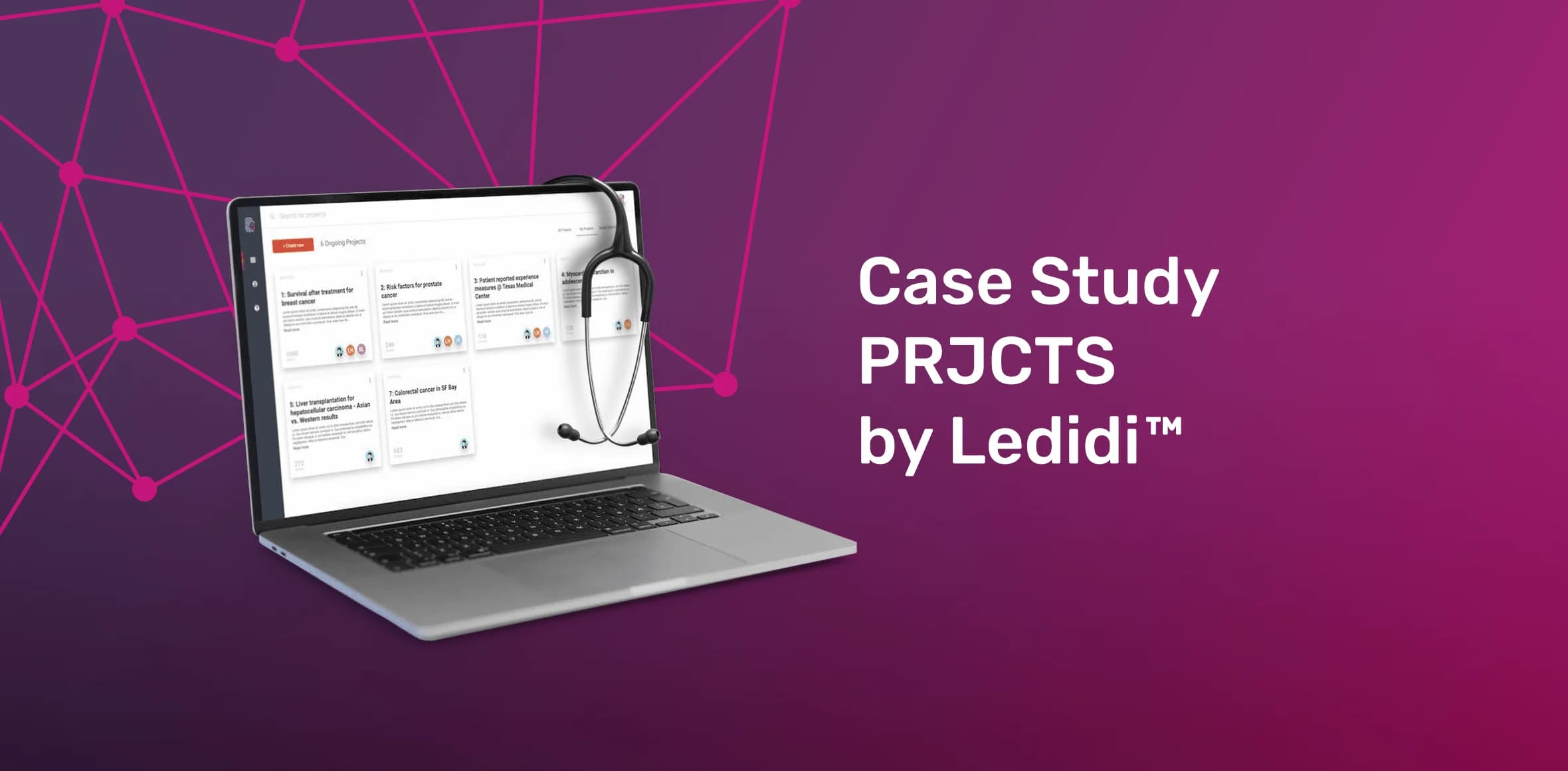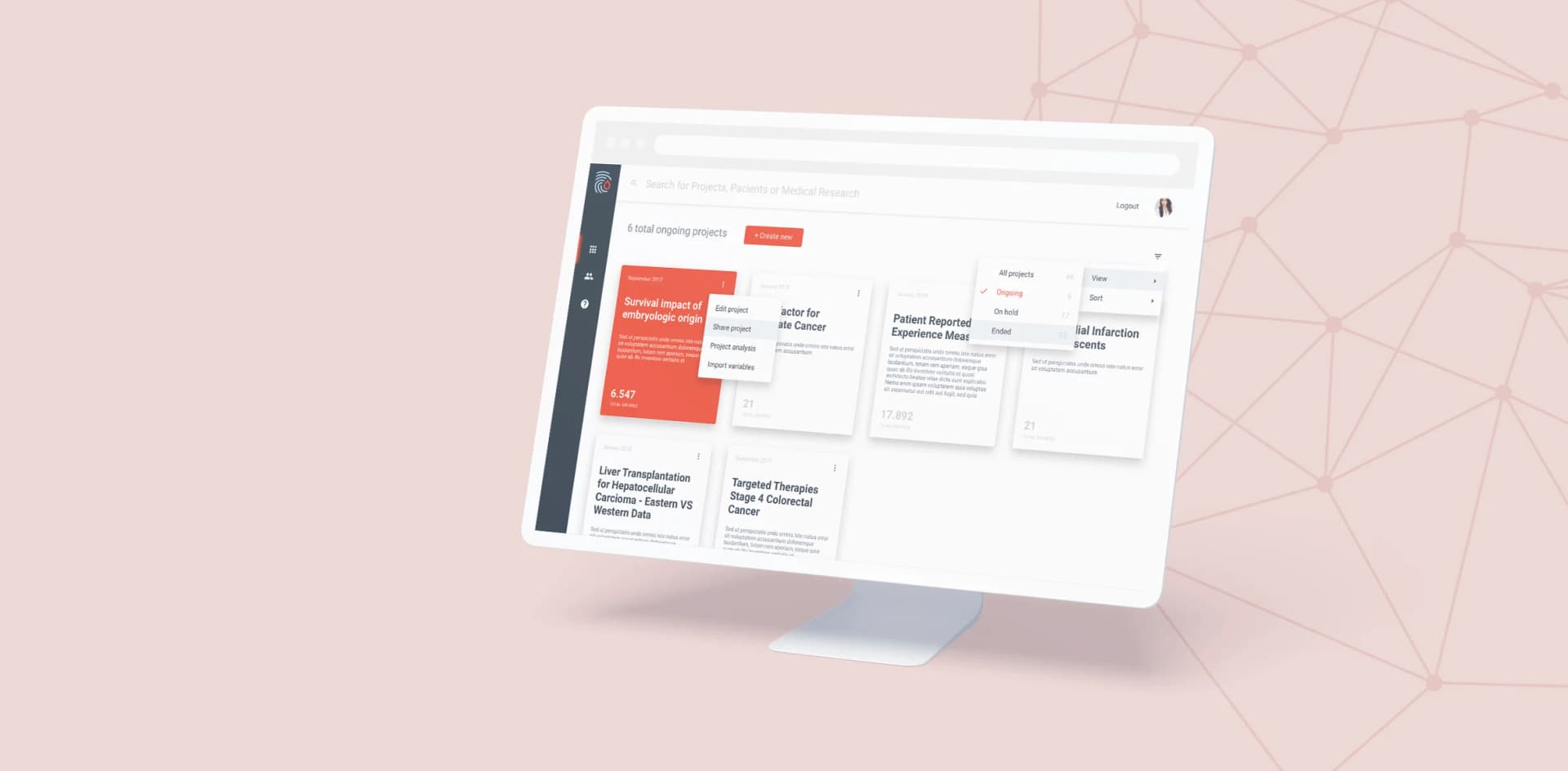
Unifying the digital experience in clinical research — a case study for LEDIDI
by Ionuț Movilă & Andreea Oproiu • over 4 years ago • 6 min read
Simplicity In Clinical Research
Scientific researchers are well-known for their ability to make sense of raw pieces of information, but that doesn’t mean they don’t have a hard time doing so. One of our clients, a Norwegian medtech company called Ledidi, is set out to improve science by reinventing how researchers collaborate and share knowledge.
Sensidev has partnered with Ledidi to create a solid web application with the help of our frontend skills, and thus to simplify the research process for this type of professionals. Nothing like a streamlined process to get our interest going!
Let’s go to the roots of the problem 🌱
The existing solutions used by medical researchers are not up to date with current technology advancements from 2021. This aspect not only slows down the entire research process but can also interfere with its ultimate quality. Therefore, the solution presented by Ledidi — PRJCTS encompasses all the steps necessary to improve this procedure, from storing data to analyzing results or collaborating with the entire team.
The actual solution proposed by Ledidi gets rid of files with raw data stored on local computers and on various institutional servers and eliminates duplicate files or different versions. At the same time, this product aims for simplicity and strives to offer a start-to-end solution for research projects or clinical registry.
When Sensidev came to the rescue 🦸♂️
Over 2 years ago we were introduced to this project by the project CTO Sondre Skaug Bjørnebekk, a customer with a long history and friend with both Sensidev founders.
At that time, the old version of the app was heavily suffering from stability issues because of a bad frontend architecture and poorly written code. Therefore, the most suitable approach after a thorough audit was to redo the existing version of the app, starting on a strong foundation and using the best industry practices.
Implementing features that reinforce simplicity in clinical research
Building on the Product Owner’s grounded vision, we started implementing a solution that organizes clinical research in projects that can be shared with other users of the platform.
Therefore, PRJTCS by Ledidi started to fall into place, and we started implementing these core features:
- a project can be defined from scratch or imported from an Excel file
- a project has a list of variables that define the scope of the research
- variables can be organized and grouped so that the imported data can be visualized on the Dataset page according to the research needs
- adding project data is very flexible and can be customized with user-defined forms
This platform is not dedicated only to doctors or researchers, patients can benefit from it, as well. One good example is how they engage with this app in their recovering process, by filling in the relevant details about their current state and add any symptom worth signalling.
Not to mention that the most advanced part of the application is the feature that enables the researchers to visualise the data in interactive ways, using charts generated live with multiple combinations possible. We made this possible using data filtering techniques.
A deeper dive into the work ⛏️
The tech stack we use is constructed around React with TypeScript and includes popular libraries like: axios , redux , redux-thunk , immer , react-beautiful-dnd , lodash , react-select , react-router-dom , react-table , styled-components , reselect , zingchart

As mentioned above, we originally started to rewrite the old version of the app, which wasn’t in very good shape, and we had to rebuild it almost from scratch. The Ledidi team was satisfied with our work and thus we organically grew the team focused on this project from one developer to five in two years' time.
Our skills actually blended very well with those of Enovatika’s, the company providing design for this product, so we can count our entire frontend troupe at seven busy bees. They do an excellent job in providing really accurate and easy-to-use design files that our developers can understand with no doubts and clarifications needed (this is quite rare in this field, and we love working with them ♥).

The entire project team is located remote in multiple locations: here, in Romania, we have the frontend team as a joint force between Sensidev and Enovatika; the backend and QA team is distributed in other countries in Europe and South America; the design team is also located in Timișoara, Romania; and the project stakeholders and ownership is in Norway.
Remoteness is essentially part of our company culture, and we manage to have systematic agile flows so everyone knows his piece of work and makes it count. Therefore, we’re excited to successfully work on this project and help in offering the medical staff a streamlined process to use!
Case Studies and Testimonials

The HR process in tech — a true story
by Andreea Rugescu, Mellisa Taizs • about 3 years ago• 4 min read